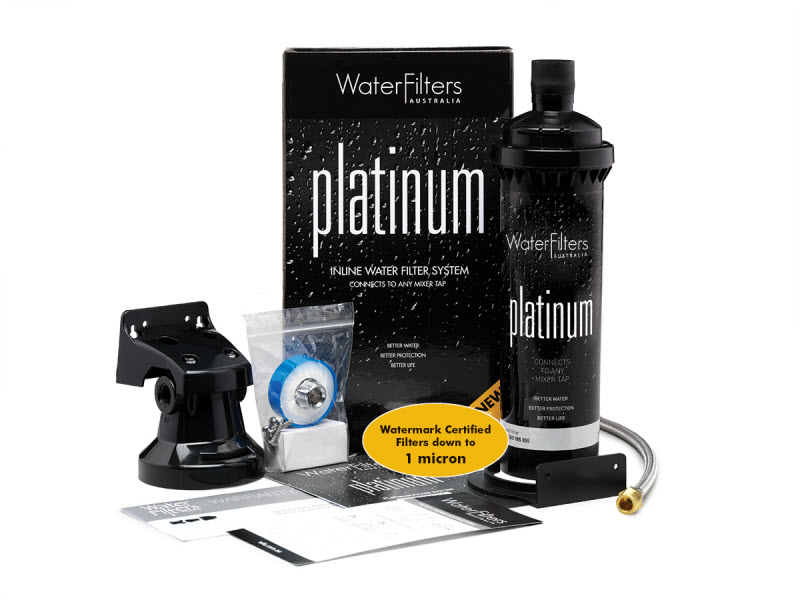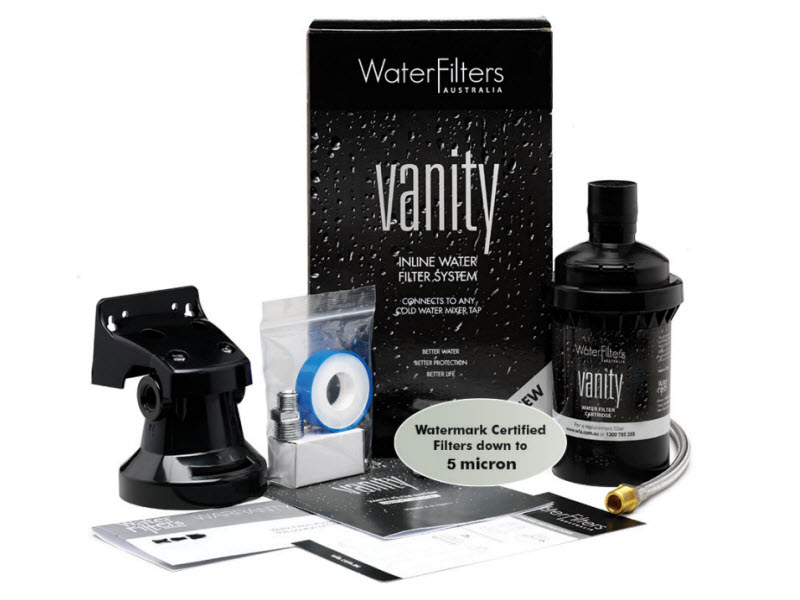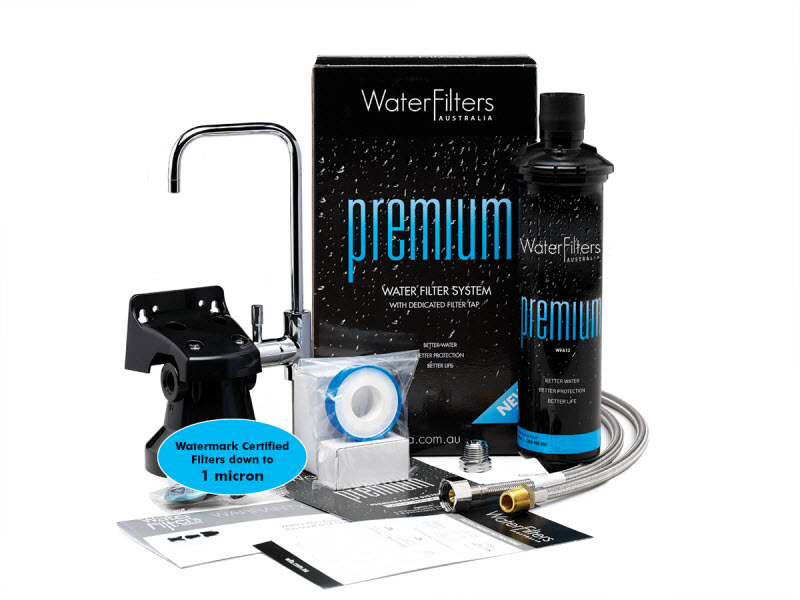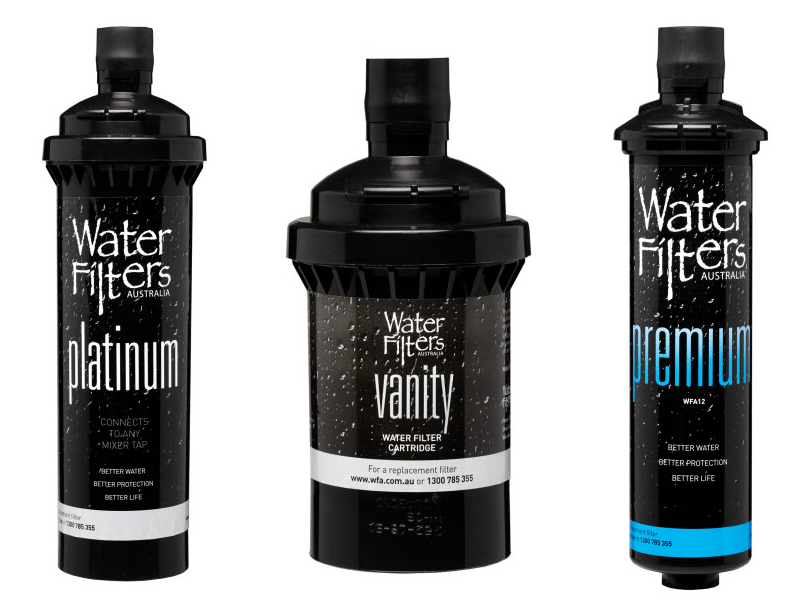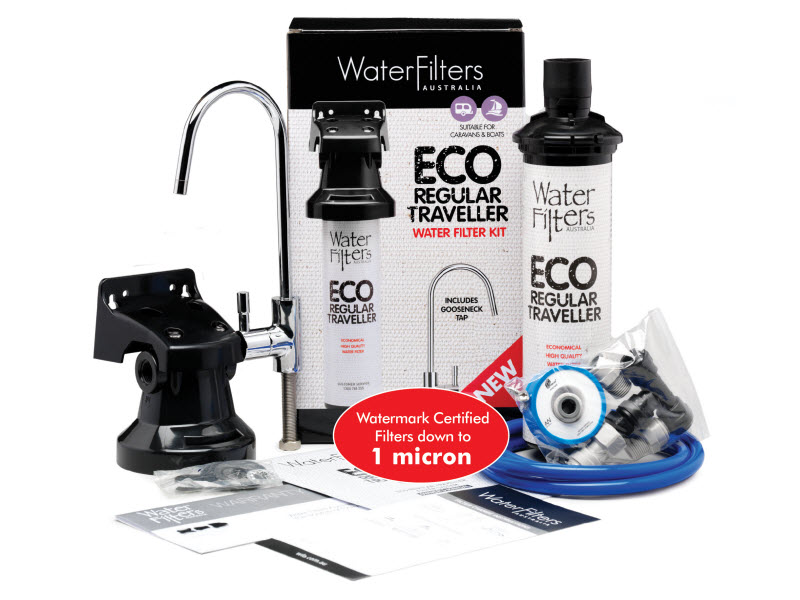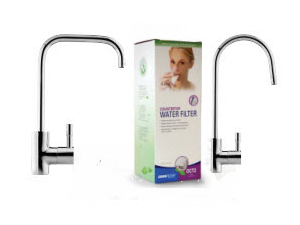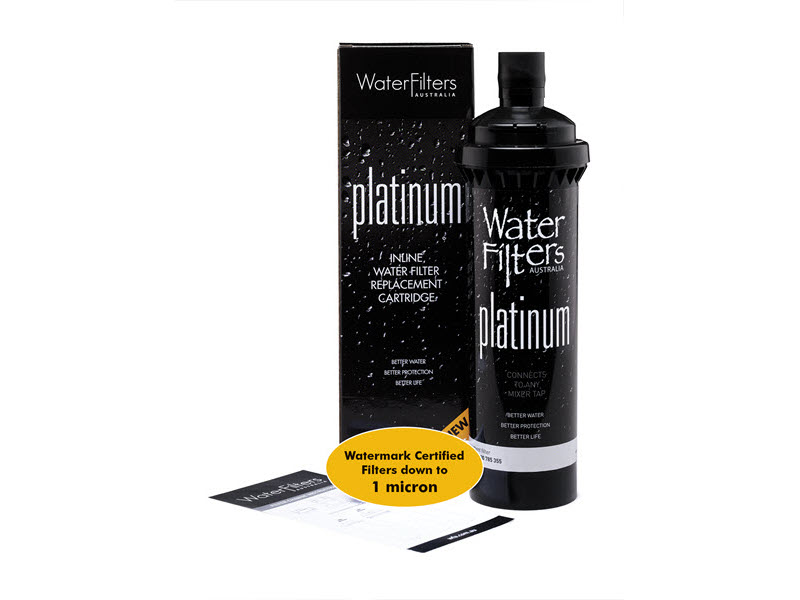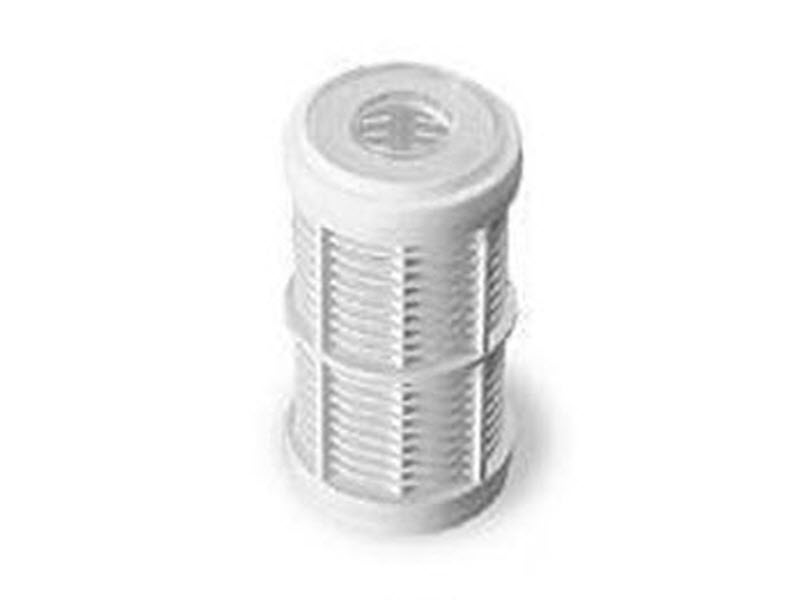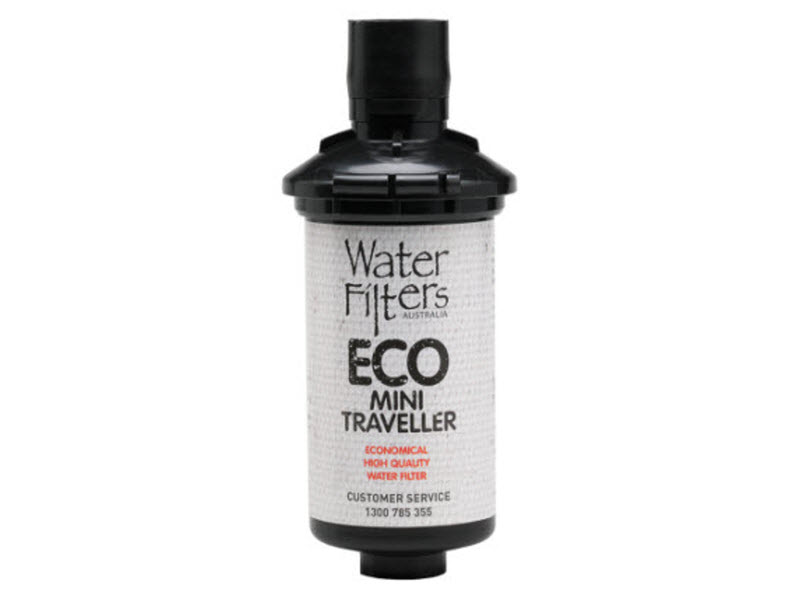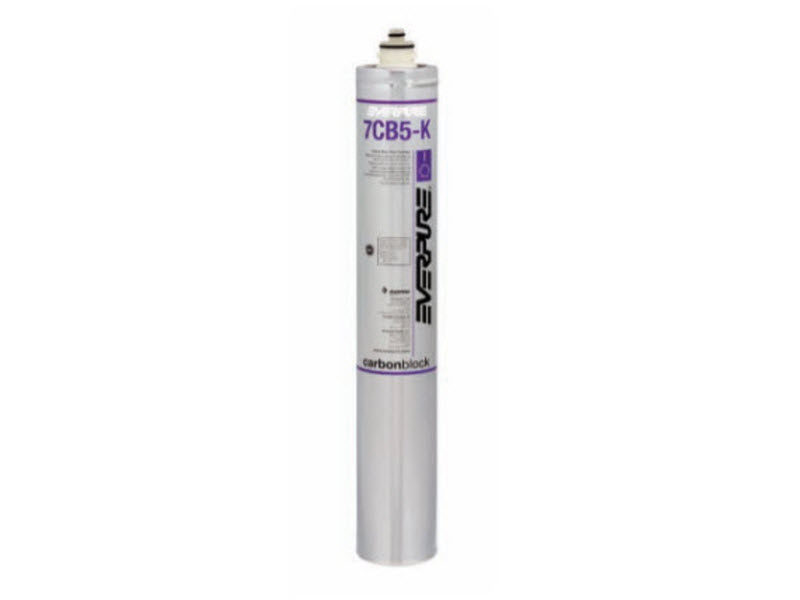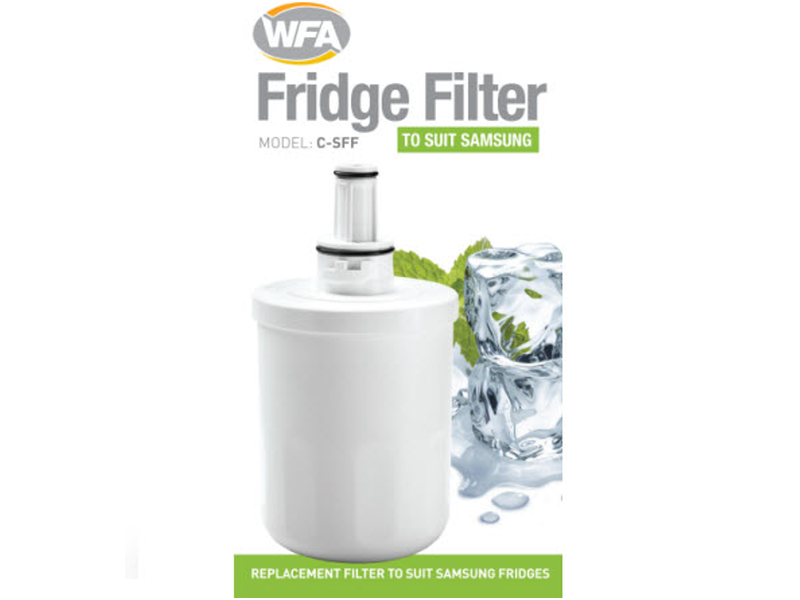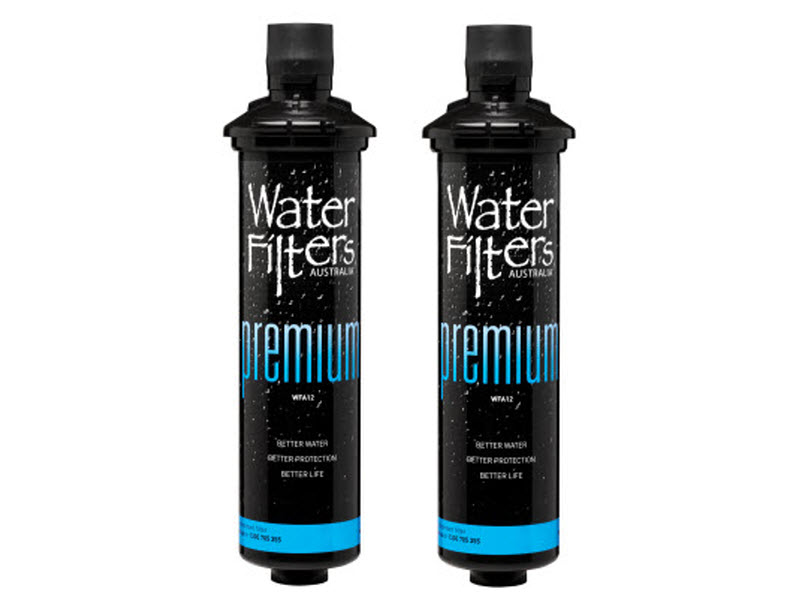This is how often you should change your inline water filter cartridge

What you can’t see in your kitchen often does more work than the things you can. No, we’re not talking about the fridge’s compressor quietly humming along. We’re talking about the inline water filter tucked beneath the sink. This type of filter connects to your existing water supply and uses a replaceable cartridge to clean the water as it flows, delivering fresh, filtered water straight from the tap. Over time, the cartridge fills with the contaminants it’s designed to remove and needs to be changed. One of the most common questions people ask when considering an inline filter is how often that needs to happen.
At Water Filters Australia, our high-quality, independently WaterMark-approved inline filters are super simple to install, use and change. Most cartridges last between six and twelve months, and for a typical family of four, you can usually count on getting the full twelve. Here’s what to know about what they are, how they work, how long they last and how to tell when it’s time for a replacement.
How inline water filter cartridges work
Inline filters are designed to integrate seamlessly with your existing plumbing, without the need for a separate faucet or bulky units taking up space on your kitchen bench. At WFA, we also offer a dedicated filter tap for those who prefer filtered water only when they want it. Both options deliver fast flow and the purest water possible.
If you’re wondering what’s happening inside the cartridge, it’s deceptively simple science. Water flows through layers of high-quality filter media, including activated carbon, which adsorbs chlorine, dirt, rust and other fine particles down to one micron.
WFA’s Platinum cartridge also includes a polyphosphate core that helps prevent limescale. As water passes through, the polyphosphate coats calcium and magnesium particles, which stops them from forming hard scale inside appliances. This not only improves filtration but helps protect your kettle, coffee machine and tapware over time.
Why do cartridges need to be periodically replaced?
Every filter cartridge has a finite capacity. Over time, as it collects and traps all those nasty impurities, the filter media begins to lose its ability to capture anything new. Once saturated, the cartridge can no longer do its job properly. Water may still flow through, but it will not be effectively filtered, so you can no longer rely on the water quality.
If the cartridge is left unchanged for too long, the trapped material can begin to break down or support bacterial growth. That means not only is the effectiveness of the filter in question, but the safety of the water passing through is as well. This is especially concerning in households with children or people with sensitivities.
In some cases, water flow can become restricted, which adds unnecessary strain to the housing and fittings leading to wear and eventual system failure.
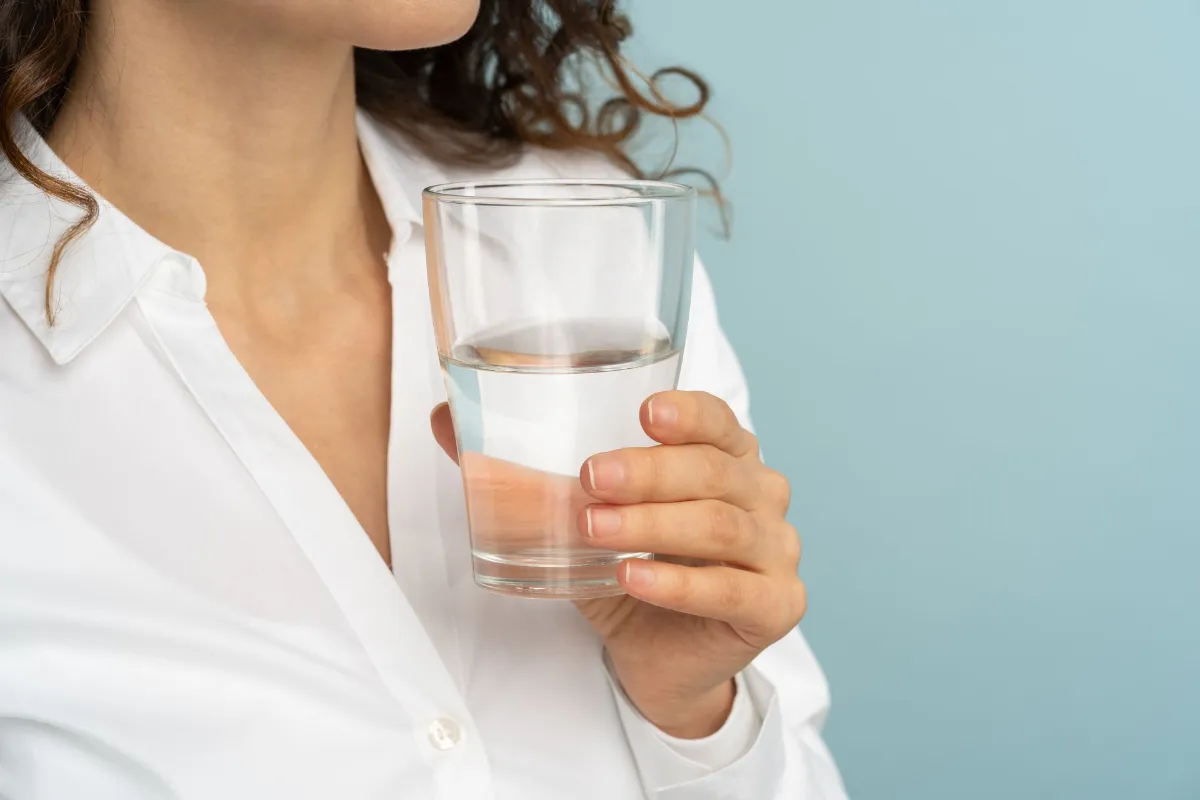
How often do inline water filter cartridges need to be replaced?
Most manufacturers recommend changing a drinking water filter cartridge every six to twelve months. This keeps the filtration process working as it should and helps ensure the cartridge is still doing its job properly. Remember, even if water is still passing through, it doesn’t mean it’s super clean.
Our inline systems at WFA are designed for simple, easy cartridge swaps and should last a regular family of four for a year. That’s because each cartridge has the capacity to handle up to 56,000 litres of water.
Aside from usage, the lifespan of a cartridge also depends on the quality of your source water. If it contains a lot of chlorine, sediment or other particles, you may need to replace the cartridge closer to every six months. The best way to stay on track is to keep a rough idea of your usage and refer to the product’s instructions. WFA also offers support to help you stay up to date, including follow-up calls when it’s time for a change.
The signs it’s time to replace your filter
If you’re sticking to the recommended replacement schedule, you’re probably in the clear. But if you’re wondering what the signs are, there are a few. If your tap water suddenly starts tasting or smelling unpleasant, that’s a strong one. Pun intended. Trust your senses and make the change.
A noticeable drop in water pressure or flow from your faucet can often be caused by a clogged cartridge. Over months of use, the filter traps so much sediment and debris that it restricts water flow. If your once-springwater-like stream has become a trickle, swap out that cartridge.
Filtered water should be crystal clear in appearance. If you start seeing murky water, discolouration or floating particles, they’re all red flags that filter effectiveness isn’t sufficient anymore. Changing the cartridge is easy and doesn’t require a plumber.
Out with the old, in with the pure
Most households will get a full year of clean, great-tasting water from each cartridge, but it’s still worth staying mindful. Don’t wait for problems to show up. Keep track of your filter’s age and check in on its condition now and then. When it’s due for a swap, make the change.
At Water Filters Australia, our inline water filters are available online from our Australian distribution centre. They are manufactured in the United States to the highest quality and functionality standards. We only supply independently Watermark Certified systems, and we stock a complete inventory of certified replacement cartridges with 100% Australian-based customer support.
When we keep saying changing the cartridge is easy, we’re not exaggerating. It’s as easy as changing a light bulb. Just a few minutes annually to enjoy pure water. It’s an investment in health and peace of mind. Shop online today or contact our team for personalised advice on the best system for your home or caravan.
Buy Water Filter Systems
& Water Filters Online
News & Articles
Hydrating smoothie recipes featuring filtered water
Sometimes the simplest pleasures also deliver a generous health boost. Smoothies are among them. While you can enjoy one any time of year, they are especially good in the warmer months when your body craves something light, hydrating and full of nutrients. Even better? Make them with filtered water to keep the flavour clean and the ingredients balanced.
What’s the Difference Between Boiled and Filtered Water?
Boiling is one of the oldest methods of making water safe, and for good reason. It quickly kills most bacteria, viruses and parasites that can be present in a supply. But boiling isn’t the only way people protect their water, and it certainly isn’t the same as filtering. The difference between the two is often misunderstood, and it’s bigger than it first appears.
Spring reset: Why filtered water should be part of your detox
Spring feels like the right time for a reset, which is why detox routines often make their way back into focus. While your efforts might centre on digestion, energy and general wellbeing, what you choose to drink plays a bigger role than you might think. Using filtered water gives your body the cleanest foundation to work from and the best chance of making those efforts count.



